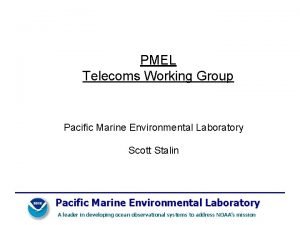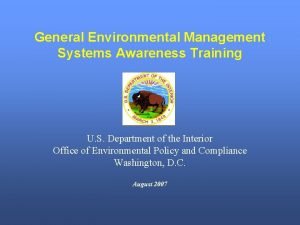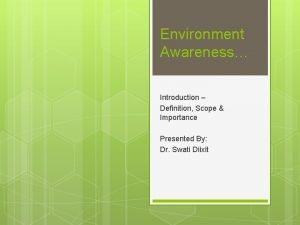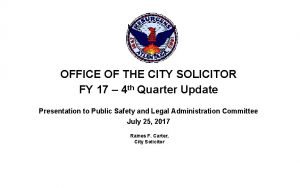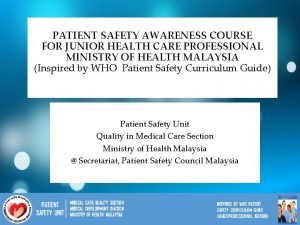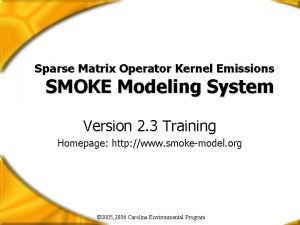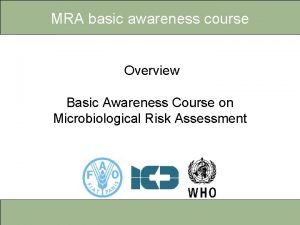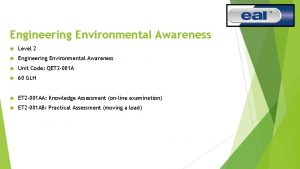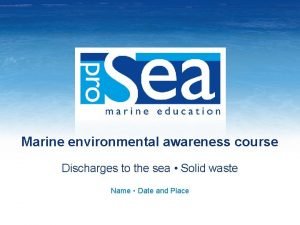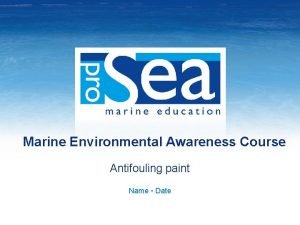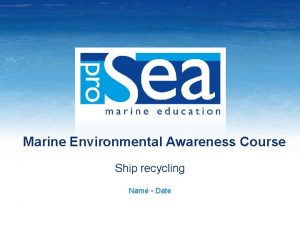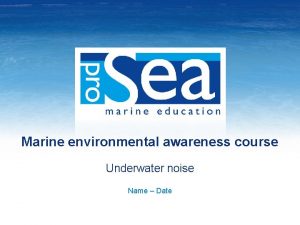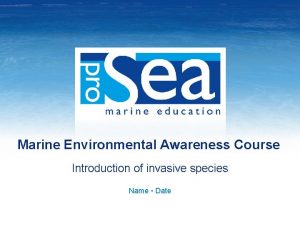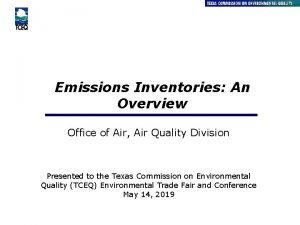Marine environmental awareness course Emissions to air Overview












- Slides: 12

Marine environmental awareness course Emissions to air - Overview Name – Date

Emissions to air: Overview Contents 1. Introduction 2. The sky is the limit 3. Six main air pollutants 4. Four main problem areas 5. Role of shipping 2 Photo credits: North Sea Foundation/ Green Award Foundation

1. Introduction Major environmental issue – strict regulations on land Shipping regulations late in time - since 2005 Photo credits: Pro. Sea

Air emissions from ships at relatively high level because: Type of fuel Lifetime of ship engines Photo credits: unknown/Job Orbiso

2. The sky is the limit ± 50 km ± 10 km The atmosphere contains different layers of air Illustration credits: Pro. Sea

Troposphere (0 -10 km) - Where we live - Where ‘the weather’ takes place - Where most pollutants end up Stratosphere (10 -50 km) - Where the ozone layer is - Relatively stable air layer - Little exchange with troposhere Photo credits: NOAA/Pro. Sea

3. Six pollutants CO 2 – carbon dioxide (engine) SOx – sulphur oxides (engine) • examples: SO 2, SO 3. . . • Sulphur (S) in fuel reacts with oxygen (O 2) in air NOx – nitrogen oxides (engine) • examples: NO, NO 2, N 2 O 2. . . • Nitrogen (N 2) in air reacts with oxygen (O 2) in air PM – Particulate Matter (engine) • small particles, such as ash, burned lubricant oil Halons and CFCs (cooling systems) VOCs – Volatile Organic Compounds (cargo-related)

4. Four main problems Acidification Climate change Ozone depletion Air quality Photo credits: unknown/Air Pollution and Climate Secretariat/NOAA’s National Weather Service Collection John Neander/NASA

Problems and pollutants (quiz) Substance CO 2 Climate Change SOx Air quality (smog - health problems) Acidification Climate change NOx Air quality (smog - health problems) Acidification Climate change PM Air quality (health problems) Halons and (H)CFC’s Depletion of ozone layer VOC’s Air quality (potentially carcinogenic)

5. Role of shipping air quality acidification Regional: ozone depletion climate change Global: Photo credits: unknown/Air Pollution and Climate Secretariat/NOAA’s National Weather Service Collection John Neander/NASA

Shipping also contributes to regional air pollution because 70% of shipping activities are within 400 km distance from coast Photo credits: National Centre for Ecological Analysis and Synthesis, University of California, Santa Barbara

Questions? 12
 Marine environmental awareness
Marine environmental awareness Cvs privacy awareness training answers
Cvs privacy awareness training answers Air higroskopis air kapiler dan air gravitasi
Air higroskopis air kapiler dan air gravitasi Pacific marine environmental laboratory
Pacific marine environmental laboratory Environmental management system awareness training
Environmental management system awareness training World environment day 2021
World environment day 2021 Environmental awareness presentation
Environmental awareness presentation Conclusion of environmental awareness
Conclusion of environmental awareness Ptit safe driving and awareness course
Ptit safe driving and awareness course Patient safety goals - awareness course
Patient safety goals - awareness course Basic electrical awareness course
Basic electrical awareness course Volkswagen quiz
Volkswagen quiz Sparse matrix operator kernel emissions
Sparse matrix operator kernel emissions



